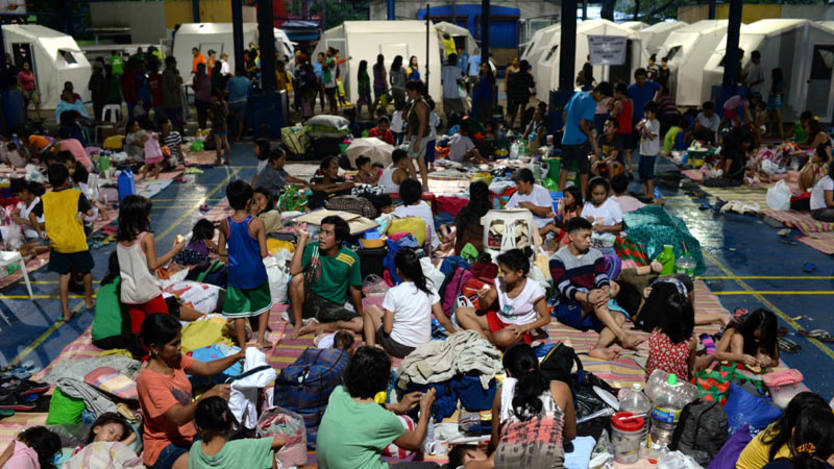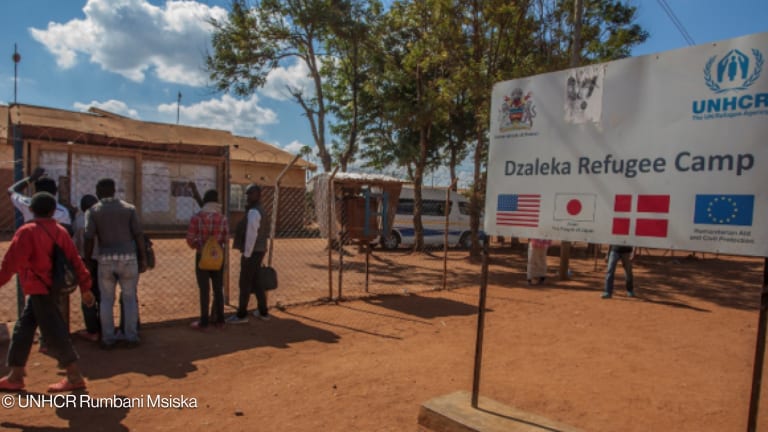
NEW YORK — Natural disasters provoked the majority of new internal displacement cases last year, outpacing conflict as a chief factor driving people from their homes.
More than 17 million people were newly displaced in 2018 as a result of weather and geophysical changes, while 10.8 million additional people were uprooted because of conflict, according to the “Global Report on Internal Displacement,” an annual assessment conducted by the Norwegian Refugee Council and the Internal Displacement Monitoring Centre.
“Internal displacement continues to be a global challenge and, as in previous years, we have seen it is very concentrated in a few regions and particularly a few countries,” said Bina Desai, head of policy and research at IDMC. “Disaster related displacement outstrips conflict related displacement by an order of magnitude, so around two-thirds more displacement is related to disasters than conflicts.”
A record-setting 41.3 million people were estimated to be internally displaced as a result of conflict, according to the findings, released May 10 in Geneva. That’s an increase of more than 1 million since the end of 2017, and two-thirds more than the estimated 25.4 million refugees.
“The findings of this report are a wake-up call to world leaders. Millions of people forced to flee their homes last year are being failed by ineffective national governance and insufficient diplomacy. Because they haven’t crossed a border, they receive pitiful global attention,” Jan Egeland, secretary-general of the Norwegian Refugee Council, said in a media statement.
Three-quarters of the estimated those internally displaced, or 30.9 million people, are living in 10 countries — with Syria, Colombia and the Democratic Republic of the Congo topping the list. Ethiopia, however, had the greatest number — 2.9 million — of newly displaced people in 2018.
Internal displacement is increasingly becoming an urban phenomenon. Dhaka, Bangladesh, has been a hotspot for people fleeing the effects of climate change, for example. And people internally displaced may likely move within their own countries more than once throughout the course of their lifetimes, according to the report.
“What we have really seen, over the years, is there is such a high level of repeated displacements that it is not a one-off experience for people. Particularly in the context of conflict, once you have been displaced you are at much higher odds for being newly displaced again,” Desai continued, offering Somalia as an example of one country where this pattern is not uncommon.
In some countries, such as in Afghanistan and Nigeria, conflict and disasters overlap as causes of internal displacement.
Other disaster-related trends are clear. Approximately 80% of the people, worldwide, who are at risk of floods live in urban areas and more than 90% of at-risk people live in Asia, according to IDMC, which has developed a model to track how many people are displaced as a result of disasters by looking at data on housing damage and destruction, and estimating the time it could take to rebuild. Tropical cyclones and monsoon floods, for example, led to mass displacement of 4 million alone in the Philippines from January through December 2018.
The actual number of people presently displaced by slow-onset disasters, meanwhile, remains largely unknown to research organizations like the IDMC.
“The problem with disaster-related displacement is usually we do not have a record of what happens to people after a week, or even after a few days when they have arrived in a shelter,” Desai said. “After that, no one looks at what happens to them or where they go.”
“That is a key gap, we believe, because a number of countries do not see the amount of displacement, but also the impact that has on societies,” Desai said.
The estimates in the latest global displacement report are likely an underestimate, as most people who are internally displaced are not formally recognized or supported by their governments. More work is needed in government action, starting with better data collection, Desai said.
“We see the need for political will to increase, but for that to really translate into concrete support at the local level, and for action particularly in urban areas. And for that, the first step really is to make visible what is often invisible. Then really starting to count and account for these people — that is making the case for more support to them,” she said.








